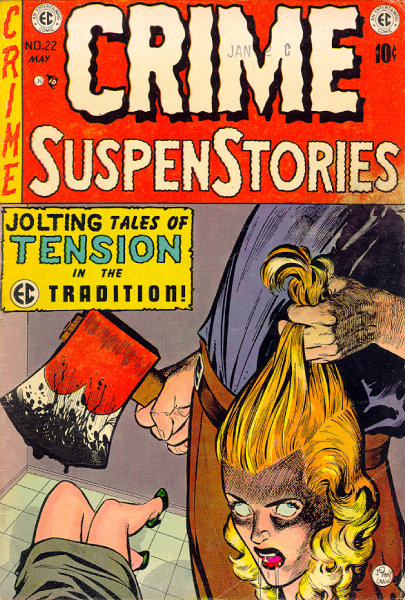
Few Americans, perhaps, understand how massive a medium comic books became after World War II. At their peak, retailers were moving $80-100 million worth of them per week. Plus, they were hugely influential: With a typical issue passed around between six to ten readers, comics were consumed by more people than the number of adults taking in movies, magazines, radio, or TV.
However, fewer of us, even more, understand how frantic the nation became when the medium went completely pulp, highlighting tales of noir crime and horror, like the infamous EC comic cover, above. With the enormous popularity of these criminal, murderous tales, comics were blamed for everything from truancy to homicide.
So argues David Hadju, in his new book, The Ten-Cent Plague: The Great Comic-Book Scare and How It Changed America. Hadju is my guest today on my WBAI-NY / 99.5 FM radio show, NONFICTION, this afternoon, Friday, August 15, 2 pm ET.
You can hear his ideas by tuning in at 2 pm. If you’re outside of the New York tri-state, you can check out our stream on the web. If you miss the live show, check out our archive for up to two weeks after broadcast.

1 comment so far ↓
I’m enjoying Hadju’s history, but for another look at the history of American comic books, I’d recommend Men of Tomorrow by Gerald Jones. Jones has a more intimate take on the evolution of the medium than Hadju, focusing more on the things that influenced the early creators and how they translated those influences on a 4-color page.
Leave a Comment